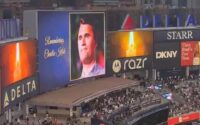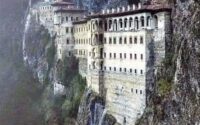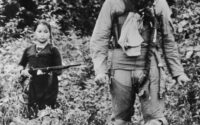m OVER 400,000 PEOPLE DO THE IMPOSSIBLE AMONG MUD AND DEPRESSION: IS WOODSTOCK 1969 THE END OR THE BEGINNING OF ALL DREAMS?
Woodstock 1969: More Than a Music Festival – It Was an Immortal Cultural Manifesto! 🤯
400,000 people, three days of mud and rain, deprivation, but no violence. What happened on the Max Yasgur dairy fields in Bethel, New York, that changed the world?
In 1969, as the Vietnam War divided America, protest movements rose, and traditional values were being challenged, an event took place that far exceeded the expectations of its young organizers: Woodstock – The Aquarian Art and Music Fair: 3 Days of Peace & Music.
1. The Symbolic Chaos
Organizers initially expected only 50,000 people. But then, more than 400,000 souls—nearly half a million, by some estimates—came, transforming a sleepy dairy farm into a makeshift city, a “Woodstock nation” that lasted just 72 hours.
🚦 Historic gridlock: Traffic backed up for miles. Ticket barriers were breached. The event was forced to become a free concert. Sanitation, medical, and food systems collapsed. Heavy rains poured down, turning the field into a giant mud puddle.
So what made it legendary, rather than a disaster?
In the midst of all that chaos and deprivation, something miraculous happened: a sense of community and absolute peace. People shared blankets, food, water, and even medicine. Amid the massive crowds and harsh conditions, there was hardly any major violence. It was the most vivid testament to the counterculture’s ideals of “Peace and Love.”
2. The Sound of a Rebel Generation 🎸
Woodstock wasn’t just a gathering place for audiences; it was a stage for legends who would shape music and culture forever. 32 artists performed, and every moment was history.
Jimi Hendrix: His final performance, on Monday morning, was historic. His cover of ‘The Star-Spangled Banner’ wasn’t just music—it was political commentary. The distorted electric guitar, simulating the sounds of bombs exploding and fighter jets, turned the anthem into a haunting anti-war manifesto.
Santana: Having only recently become popular in the San Francisco area, this Latin rock band exploded with a fiery rendition of ‘Soul Sacrifice’, propelling them to international superstardom.
The Who, Janis Joplin, the Grateful Dead, Creedence Clearwater Revival, Crosby, Stills, Nash & Young (their second time performing publicly!)—all rose to prominence, transforming Rock, Folk, and Blues music into a spiritual weapon for a generation searching for meaning and change.
3. A Controversial Legacy: The End or the Beginning? 🤔
Woodstock was a financial and organizational failure, but a huge cultural success. It is considered the pinnacle of the 1960s Counterculture.
The Promise of a New World: It demonstrated that a large society could coexist peacefully, without the need for strict laws or police.
The End of the Fantasy? Some critics argue that Woodstock, along with subsequent chaotic events like Altamont, marked the end of the “Peace and Love” fantasy because the movement lacked structure and reality.
Lasting influence: However, its legacy transcends the event. Woodstock gave birth to modern music festival culture and promoted the use of music as a powerful tool for social protest and political change. To this day, the spirit of “Peace and Music” remains a symbol of hope for human unity.
👉 The question is: Does the spirit of solidarity and non-violence of Woodstock still exist in today’s major events? Or is it just a beautiful, unrepeatable memory of a generation gone by? Share your opinion!


